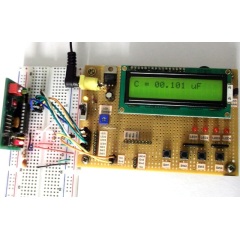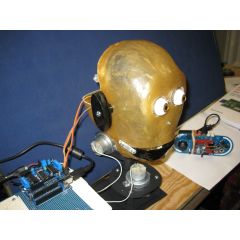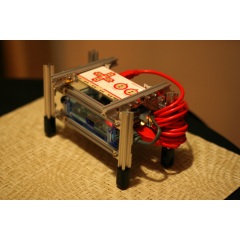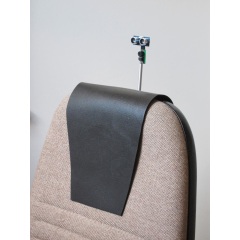Categories
- animatronics (12)
- apple (11)
- arduino (179)
- art (41)
- articles (121)
- artificial intelligence (11)
- automation (421)
- avr (205)
- bitcoin (3)
- breadboard (9)
- cameras (57)
- cars (26)
- cell phones (28)
- clothing mods (21)
- console mods (26)
- dangerous (94)
- desktop mods (24)
- embedded (5)
- flying things (54)
- fpga (22)
- gaming creations (108)
- interface (225)
- internet (17)
- laptop mods (6)
- lasers (22)
- linux (7)
- magnetic (3)
- medical (12)
- microcontrollers (51)
- misc projects (152)
- msp (12)
- music (124)
- pic (90)
- projects (23)
- pyroedu (76)
- raspberry pi (26)
- robots (312)
- security (36)
- sensors (307)
- software (200)
- solar (19)
- stamp (9)
- tools (149)
- tutorials (98)
- Uncategorized (45)
- usb (44)
- wireless (256)
Sponsors


Posted June 25, 2014 by Chris
"I have to admit, I am usually not the biggest fan of interpreted languages and high level programming. But in this case, they were very convenient.
This is thus a small article about what you can do in 3-4 hours with Matlab and a FTDI USB connectivity to your project. As an example, here is a project where my webcam output gets displayed on my led matrix."

Posted May 30, 2014 by Chris
"This is first in series of articles about project I’ve been building in my spare time since last Summer. Actually it all began when I was researching a topic of modeling human motion kinematics in order to create gesture recognition library for Kinect. This ties heavily into motion theory of robotic manipulators so I also glanced at some designs of robotic arms."

Posted May 25, 2014 by Chris
"…At this moment the robot can measure its speed and regulate its motors to keep a desired speed. This means that when the robot goes uphill it will recognise that its speed has dropped and will increase motor power and vice versa when it goes downhill. The regulation is currently nothing more than: if speed is faster than desired then decrease motor power with a constant amount…."

Posted May 17, 2014 by Chris
"Capacitors are one of the most common passive electrical components that are extensively used in all kinds of electronic circuits. In this project, we will discuss a technique of building a digital capacitance meter using a PIC microcontroller. This project can measure capacitance values from 1 nF to 99 uF, with a resolution of 1 nF."

Posted May 7, 2014 by Chris
"The Esplora sketch was modified to poll the joystick (4 directions) and the right button cluster. When they are activated, an appropriate ASCII character is sent via serial to the XBee which sends it to the Uno which controls the head via a Motorshield."

Posted May 4, 2014 by Chris
"Loki builds upon the software of Seeker and Mr. Roboto, including remote control and diagnostics over WiFi, but adds more capable vision processing, speech recognition, indoor pathfinding (Using A*), basic Artificial Intelligence, and general refinement of the architecture."

Posted May 3, 2014 by Chris
"I wanted to go for a mad science robot look. I really liked pictures of robot face prototypes with electronics sort of bursting from the back. I envisioned control wires coming out from behind a mask and running all around the room to control various things, looking like hair, or veins, or roots, depending on which analogy you wish to use. The face was easy enough to procure; Hobby Lobby sells basic androgenous masks. I also wanted a few animatronic features, like a moving mouth. For this, I took a geared DC motor out of a Billy Bass singing fish."

Posted April 14, 2014 by Chris
"This weekend I finally knocked out the final hardware config for me to consider the ‘Raspberry FM’ project complete. What is this project exactly? It’s an experiment I gave myself to combine a Raspberry Pi, Makey Makey, MicroRAX, and MPlayer to create an auto-on internet radio player. I called it ‘Raspberry FM’ after a combination of the Raspberry Pi, and Soma FM, my favorite internet radio station."

Posted April 12, 2014 by Chris
"Often we don’t care about our posture which can result in back pain and worse. If someone tells you to sit upright this is easy to do, but it won’t hold on for more than a few minutes. Now wouldn’t it be great to have a device that can remind you to improve your posture?"

Posted March 30, 2014 by Chris
"In this tutorial, I’m going to harness the awesomeness of Raspberry Pi to build a moisture sensor for a plant pot. You will be able to monitor the sensor locally on the LCD or remotely, via ControlMyPi.com, and receive daily emails if the moisture drops below a specified level."






